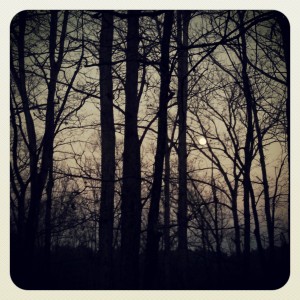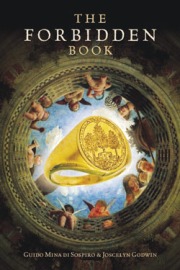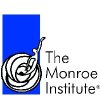
An Interview with Sasha Chaitow, Academic Director of the Phoenix Rising Digital Academy:
In our technologically ravaged age we often lose sight of the inner resources necessary to fully express our creativity and intellect. With the ease that comes with digital art, the deeper connections that the creative process requires and engenders is something that can be passed over in the lust for immediate results.
Studies in the humanities are facing strained support from the mainstream Academy. As scientism increases its stranglehold on our culture we hear the continuous hum of critique that philosophy, poetry and literature have had their day, it’s time for more practical concerns. In this environment it has become more important than ever for serious scholars to seek outside the Academy to create institutions that support and encourage society to continue seeking a deeper understanding of life that goes beyond corporate interests or shallow scientific discoveries.
Sascha Chaitow is director of the Phoenix Rising Digital Academy, an online initiative to “to reinstate appreciation and scholarship of philosophy and culture.” Phoenix Rising allows scholars a place to continue to address the depth of culture, and, through digital communications, presents a new avenue for these discussions to happen on a global scale.
The potential of the Esoteric Renaissance is well represented by individuals who embrace the full spectrum of our times. As an artist, scholar and innovator, Sasha has embraced the potential of technology to explore areas that many futurists neglect in their forecasts. In the following conversation Sasha discusses her artistic practice and provides insight into the interstices of art, culture and Tradition.
***
What inspired you to pursue painting?
Synaesthesia and music. I’ve always been synaesthetic – a quality (aka condition!) meaning that I associate sensory input from one sense with that of another. In my case, it means that I visualize images, colours and shapes, when hearing sound or reading text. It all began with Jim Morrison’s poetry when I was 14, and I later traced his sources and drew inspiration from the Beat authors, then moved to Blake, Rimbaud, Baudelaire, and John Milton. This led to an enduring interest in the Fallen Angels mythos and Gnostic cosmology, which was also essentially my lead-in to the study of esotericism. I quickly reached a point where the images my mind would generate when reading poetry in particular would form in a constant cascade, which I felt compelled to bring into reality. I have always accompanied my paintings with excerpts from the texts or poems or song lyrics that inspired them because for me they are an integral part of the work itself.
How can the artistic process aid in initiation?
In its most simple form, initiation is an inner ontological shift – one which I conceive of as an ongoing, immanent process. Traditionally (within the Western Esoteric Tradition), initiation for the individual is supposed to be a process of understanding, connecting and uniting body, mind and spirit so as to produce a very special kind of perception of the world and our own existence – something that Patrick Harpur calls “a different way of seeing” which Joseph Campbell also describes beautifully in Hero with a Thousand Faces.
Now, the creative process leads to several leaps of faith and a lot of inner work, whether one is esoterically minded or not. The process of creating anything is an extremely powerful one, which demands that the artist (or musician or poet or writer) reach past his/her very self into that invisible realm of Ideas that Henri Corbin termed the Imaginal mesocosm. It requires a very specific frame of mind and way of seeing the world – one which I believe artists of all kinds do naturally. For it to become an initiatory process however, the artist needs to consciously examine the thought processes that s/he follows when “visited by the Muse.” This inevitably leads to soul-searching questions, many of which are difficult and which I suspect lie at the heart of the “tortured artist” stereotype. Yet if one persists, one becomes conscious of being a part of the creative impulse within Nature itself – one comes to understand the imagination quite intimately, and in the process, learns a lot about oneself.
Initiation has become very strongly embedded within formalized ritual in a good number of esoteric systems, but to my mind the act of creating an art-form is a ritual in and of itself, even if the motions of that ritual involve laying out the tools of one’s trade, creating an atmosphere appropriate for working in, tuning one’s instrument, rather than what we would traditionally consider ritualistic acts. Hence, following a number of esoteric thinkers over the centuries, I am quite convinced that the creative process is a powerful, if not a supreme, initiatory vehicle for anyone with a predisposition to explore it, and I also believe it is also open to everyone, regardless of talent and artistic bent; hence its healing power as witnessed in the various art therapy systems. It is not the technical result which is important, but conscious engagement with the creative process.
 What inspires your art?
What inspires your art?
Symbolism, wordplay, double entendres and palimpsestic meaning. Or, put another way, anagogical thinking (See Angela Voss’ excellent essay on the topic). I am far less interested in exploring visual techniques than I am in finding new and surprising ways to communicate layered meaning so as to surprise and engage the viewer.
I see visual art as a language and draw heavily from the emblematic and esoteric symbolic traditions in order to tell whole, layered stories – through a painting. I like dealing with uncomfortable or equivocal meanings that somehow relate to central esoteric concepts; the question of evil for example, or that of initiation itself. A number of my more recent paintings deal with the initiatory journey itself, and I have made use of a number of ancient and archetypal symbolic conventions presented in portrait form. Even if the viewer does not consciously comprehend each of the symbols, it is my belief that in some way they resonate with the unconscious mind.
Are there specific art movements that focus more heavily on the “artist as initiate” than others or is this a common theme in art?
Although it has appeared a number of times as a source of inspiration, I don’t think I would go as far as to say that it is a common theme as such, though I would be surprised if the sensations and thought-processes I have mentioned above are not familiar to all artists, regardless of the technique or philosophy they choose to express. Looking back in time there are artists whom we may consider initiates on account of their depth of esoteric insight, yet they may have considered themselves tradesmen or artisans, or something else entirely.
Leonardo da Vinci, Botticelli, Michelangelo, Poussin are some such examples. Artistic movements that show a clear awareness of this concept make their appearance in the 18th century, as part of the early counter-Enlightenment, and those aspects of Romanticism that were most influenced by Illuminism. It was widely discussed by Fabre d’Olivet, Saint-Martin and elaborated by Novalis, Schlegel, and Pierre-Simon Ballanche. The poet was respectively seen as “the recipient and transmitter of revelation and a divine universal language,” “a priest who will lead humanity to its eschatological fulfillment by relinking the world here below and divine transcendence,” while “poetry is the intuitive faculty of penetrating the essence of beings and things. 1
In addition, the 19th century French Symbolist movement was almost entirely inspired by this concept as put forward by Josephin Peladan, an eccentric and greatly misunderstood figure in the history of both esotericism and art. Peladan’s work and vision is in fact the topic of my PhD thesis, in which I hope to rehabilitate his image, to some extent at least!
Who are your favorite “artist initiates”?
To answer that it depends how strict I should be about defining the term “initiates”, as I believe that all artists are initiates, whether they realise it or not, not only restricted to those movements which consciously attempted to utilise art to such ends. They would certainly include the Renaissance Masters, especially figures such as Gustave Dore, Bosch and El Greco, the pre-Raphaelite brotherhood (Rossetti in particular), and a good many figures from the Symbolist movement, such as Jean Delville, Gustave Moreau, Carlos Schwabe, Nikolai Konstantin Kalmakoff, and Nikolai Roerich.
One cannot leave out the poets such as Rimbaud and Baudelaire, nor the musicians and dancers, such as Stravinsky and Nijinsky. Then, of course, there is Wagner, who, controversies aside, was also an immensely influential figure for the 19th century symbolist movement and whose theories Peladan developed.
Are there any contemporary artists that you think elaborate on this idea?
Indeed, though there are different categories: those artists who may have no knowledge nor interest in these concepts, yet whose art communicates breathtaking insights, artists who deliberately seek to use their art as a mode for communicating these ideas, and those who go as far as to incorporate art and ritual as well as to develop these concepts still further.
Some wonderful contemporary artists who depict overtly alchemical and other esoteric themes include Laurence Caruana, Eleonore Weil, Vincenzo Marano, Karena Karras, and Madeline von Foerster, among many others. I think this concept is also at the heart of the performance art so frequently found in occulture and pagan festivals in recent years.
How are the visual arts like alchemy?
Although there is a danger of oversimplification in terms of historical and cultural relationships between the two, nonetheless both art and alchemy have immense transformative powers, and both require the uninterrupted input of the active imagination (see Dr Voss’s article linked to above, as well as the seminal article by Henri Corbin – Mundis Imaginalis ), which in turn, they both enrich.
Both art and alchemy are processes of becoming, of manifestation and of metamorphosis, which only yield as much as is put in. Both of them are acts of Poïesis (creation or manifestation), and the supreme act of love, according to Socrates, is “a begetting in the soul which strives for the Forms, the only way to possess immortality and true happiness.” 2 In this sense, they are alternative routes to the same end, making use of the same driving force (Eros) in order to reconcile dualities and imperfections in matter and in Man, and a means to achieving immortality, whether in the form of an image which by its nature is timeless, or of the Philosophers’ Stone, which in this case is a clearly symbolic and philosophical end in itself.
Do you think that today’s alchemical practitioners have the view of becoming “conscious (intermediaries) in the process of redeeming dualities between man and nature, matter and the divine.”?
I daresay that depends on the practitioner! That particular process could be described as being the epitome of medieval and Renaissance alchemical practice, wherein it would be unthinkable to separate theory and practice, and those who did focus on practice for material gain were disdained as charlatans of the lowest order!
In modern times, the opposite seems to have occurred, as thanks to Jung the spiritual aspect of alchemy has by and large been isolated and cut off from its practical side. The reason this is misguided, even though it has its own value as a spiritual-psychological way of seeing the world, is because Nature – material nature and her correspondences with both Man and the Divine – are at the heart of alchemical work. To truncate that means that one is no longer practicing alchemy, but a form of spirituality inspired by alchemy.
Is it possible for art to have the same effect?
I firmly believe that it is, with one major caveat, as expressed above. The artist is always in danger of losing touch with material reality, and many artists do truly suffer from the “tortured poet” syndrome. One esoteric explanation for this relates to the effect of the spiritus mundi: expressed beautifully by Franz von Baader:
“[E]very true poet or artist never escapes a doubled affect or emotion. Each yearning after the manifestation or incarnation of the Idea [Sophia] in any case has the complementary effect of pain and even anger against the refracting Substance.”
Baader is referring to both the imperfection of the manifested image compared to the Idea, as well as the ‘labour pains’ experienced in the conflict with the spiritus mundi, explained by Arthur Versluis as corresponding to “the demiurge of the ancient Gnostics: the power of selfishness, of acquisitiveness and of power-over.” 3The manifestation of this effect is the dark, melancholic, Saturnian side of art, abounding with ‘metaphysical despair,’ or ‘incandescent melancholia’ explained in modern terms as ‘the expression of the attitudes, the feelings and the ideas of a man who has left static mechanism but has not yet arrived at a reintegration of his thought and art in terms of dynamic organicism. 4 Its alchemical correspondence is of course the nigredo phase of the prima materia – so necessary and brimming with potentiality which can be manifested once the dark night of the soul (allegorical, figurative, or literal) can be overcome.
- 1. Antoine Fabre d’Olivet, La langue hebraïque restituée, (1815-1816) F. Schlegel, Novalis, Athenaeum (1798-1800)
- 2 Robert Cavalier, “The Nature of Eros ,” http://caae.phil.cmu.edu/Cavalier/80250/Plato/Symposium/Sym2.html
- 3 Franz von Baader, ‘On a Lasting and Universal Spiritual Manifestation Here Below,’ in Arthur Versluis ed., trans., Wisdom’s Book, pp. 241-247 (p. 245) – Arthur Versluis, Wisdom’s Book, p. 16
- 4 Morse Peckham, ‘Towards a Theory of Romanticism,’ repr. in. Gleckner and Enscoe, Romanticism: Points of View (Detroit, 1962) p. 242 cited in Wouter Hanegraaff, ‘Romanticism and the Esoteric Tradition,’ Gnosis and Hermeticism, pp. 245-7 (p246)
Sasha Chaitow is the founding director of Phoenix Rising.
Sasha Chaitow is a graduate of EXESESO MA Western Esotericism (Exeter) and MA English Literature (Indianapolis-Athens). She is assistant professor in Religious Studies at the University of Indianapolis Athens, and also an artist, writer, and events organiser. Her research interests include art and esotericism, mind and consciousness, ritual and initiation, and Modern Greek Masonic history.She is also an artist, painting portraits on commission and alchemically surrealist-symbolic images on inspiration. Sasha directed the 1st International Phoenix Rising Conference entitled “A Dying Society or a Renaissance for the 21st Century, ” which took place on 6th & 7th November 2009, in Athens, Greece. She was also coordinator for Greece for the 2008 Esoteric Quest Conference, on the theme of Ancient Greek Mysteries and Philosophy, hosted by the New York Open Centre and which took place on Samothrace, Greece.
Phoenix Rising Digital Academy
Online courses in Western Esotericism, Philosophy and Art are made globally available by an international faculty of accomplished scholars seeking to reinstate appreciation and scholarship of philosophy and culture.
This independent academic initiative is a direct response to the closure of many university programmes in the Liberal Arts across Western universities, and to the perceived need for better academic representation of neglected aspects of Western Esoteric Traditions outside formalised academia. Phoenix Rising Academy is the first such initiative globally to combine serious scholarship of these topics at entry-level with digital learning technology. For 2011 the Academy offers 39 courses covering numerous topics across the spectrum of Esotericism and the Arts, ranging from introductory courses in Esoteric topics to Occultism in pop culture and more.
In a time of cultural crisis and widespread misinformation, this Academy’s purpose is to offer accessible and accurate information on a broader scale, with an active interest in bridging the widening gap in the humanities. Online and live events and intensive seminars are in planning for various locations in the UK and Greece.
Visit www.phoenixrising.org.gr for full course listings and detailed information about the Academy’s philosophy, structure, faculty and activities.



 The angles of this triangle represent the very course of all existence, and it acts as a template that can be applied in a variety of ways. In one instance Naglowska assigns the angles the following names: Night, Noon, and Evening. Since the beginning, the sun rises and sets again, creating light and darkness respectively. Therefore, within this three-pointed cycle there are two qualities, light and dark, which are to be balanced.
The angles of this triangle represent the very course of all existence, and it acts as a template that can be applied in a variety of ways. In one instance Naglowska assigns the angles the following names: Night, Noon, and Evening. Since the beginning, the sun rises and sets again, creating light and darkness respectively. Therefore, within this three-pointed cycle there are two qualities, light and dark, which are to be balanced.
 What inspires your art?
What inspires your art?











